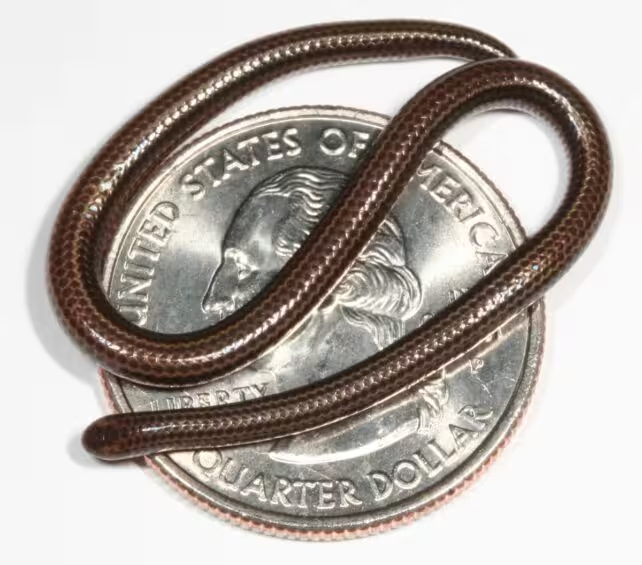3 Minutes
An Extraordinary Rediscovery: Barbados Threadsnake Resurfaces
Nearly two decades after it was believed to have vanished, the world's smallest snake, the Barbados threadsnake (Tetracheilostoma carlae), has been found once again. This elusive reptile, so diminutive it can easily be mistaken for an earthworm, was recently discovered during an ecological assessment conducted by the Barbados Ministry of the Environment and National Beautification in partnership with global conservation group Re:wild.
Scientific Profile: The Biology of the Barbados Threadsnake
Measuring only 8 to 10 centimeters (3 to 4 inches) in length at maturity—small enough to almost fit atop a US quarter—the Barbados threadsnake stands as Earth's tiniest known snake species. It is notable for its slender profile, subtle orange striping along its spine, laterally placed eyes, and a distinctive scalation on the snout. As a member of the blind snake family, it relies heavily on cryptic behaviors and spends much of its life hidden beneath leaf litter or stones.
Project officer Connor Blades of the Ministry of Environment explained, “Barbados threadsnakes are blind snakes, so they're very cryptic. They're quite rare also, it seems. There have only been a handful of confirmed sightings since 1889, so there are not many people who have ever seen it.”

Rediscovery Efforts and Scientific Validation
The find is the culmination of over a year of meticulous searching through the forests of central Barbados. Blades, together with Justin Springer from Re:wild, sifted through rocks and roots before spotting the snake beneath a tree. “When you are so accustomed to looking for things and you don’t see them, you are shocked when you actually find it,” commented Springer. “You can’t believe it. That’s how I felt. You don’t want to get your hopes up too high.”
After its retrieval, the specimen was taken to the University of the West Indies for careful analysis due to its resemblance to the invasive Brahminy blind snake. Advanced microscopic examination confirmed the identity of the threadsnake before it was safely released back into the wild.
A Precarious Future: Habitat Loss and Conservation Challenges
Barbados’ native forest habitats have suffered dramatic reduction; only 2 percent of the island’s original woodland remains, the rest converted for agriculture over four centuries of colonial history. The rediscovered species is acutely vulnerable—not only because of its secretive nature and small population, but also due to its reproductive strategy. Female Barbados threadsnakes produce only a single egg per clutch via sexual reproduction, while the related Brahminy blind snake can reproduce asexually and in greater numbers, increasing competitive pressures.
Springer underlined the conservation stakes: “The threadsnake’s rediscovery is also a call to all of us as Barbadians that forests in Barbados are very special and need protection. Not just for the threadsnake, but for other species as well—for plants, animals, and our heritage.”
Conclusion
The remarkable rediscovery of the Barbados threadsnake highlights not only the persistent mysteries of Earth’s biodiversity but also the urgent need for habitat preservation in the Caribbean. As one of the planet’s rarest and smallest reptiles, the threadsnake’s survival hinges on continued conservation action and environmental awareness. The story stands as both an inspiration for future zoological exploration and a reminder of the delicate balance that sustains island ecosystems.
Source: sciencealert



Comments